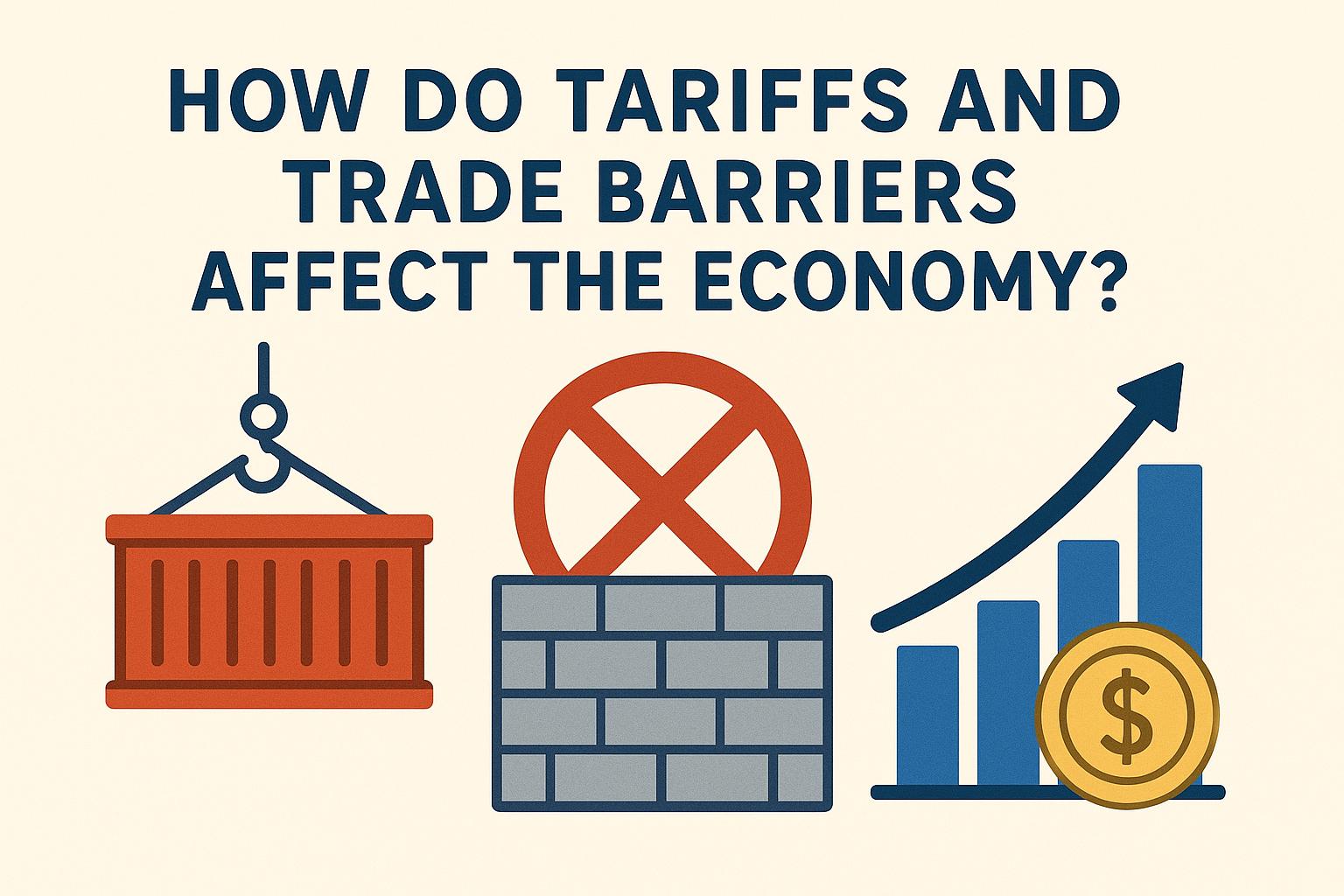How Do Tariffs and Trade Barriers Affect the Economy?
- Written by: admin
- Category: Uncategorized
- Published: September 25, 2025

Understanding Tariffs and Trade Barriers
Tariffs and trade barriers are pivotal in shaping the dynamics of the global economy. They influence trade between nations and have substantial effects on domestic markets. These measures are implemented by governments for numerous reasons, ranging from protecting emerging industries to maintaining a balanced trade economy and managing domestic political pressures. While tariffs and trade barriers can confer benefits to specific sectors, their broader economic consequences are significant and multifaceted.
Tariffs: A Closer Look
Tariffs represent taxes levied by governments on imported goods, aiming to increase the cost of foreign products. Such an increase is intended to make domestic products more competitive within national markets. Tariffs are typically structured in two forms: specific tariffs and ad valorem tariffs.
Specific tariffs involve a set fee per unit of the imported item, irrespective of its value. For instance, a fixed charge may be placed on each imported unit of steel. In contrast, ad valorem tariffs are based on a percentage of the item’s total value. For example, a 10% tariff on imported electronics means the tariff increases proportionally with the goods’ price.
While tariffs have the principal advantage of protecting domestic industries from foreign competition, they often result in increased prices for consumers. This can negatively impact consumer purchasing power and limit product choice in the market. In an era of globalization and interdependence, tariffs can provoke retaliatory measures from other countries, which may escalate into trade disputes or even trade wars.
Impact on Domestic Economy
The introduction of tariffs can initially foster domestic production by insulating local industries from foreign competition, potentially leading to short-term job preservation. Local firms, under the protection of tariffs, might increase their output to meet domestic demand and maintain employment levels.
Nonetheless, without the pressure of external competition, domestic industries might suffer from reduced motivation to innovate or improve efficiency. Moreover, while tariffs contribute to government revenue, their fiscal significance can vary significantly based on a country’s economic configuration and level of trade dependence.
Effects on International Trade
Globally, tariffs can induce trade diversions, prompting countries to redirect trade towards alternative markets or suppliers that present more favorable economic terms. This reshuffling of trade patterns can disrupt existing economic relationships and lead to new alliances. Countries affected by tariffs might implement countermeasures, potentially leading to disrupted supply chains and fostering a climate of economic uncertainty.
Exploring Trade Barriers
Trade barriers extend beyond tariffs to encompass a range of methods employed to influence the cross-border flow of goods and services.
Non-Tariff Barriers
These barriers include quotas, embargoes, and strict regulations regarding product safety and standards. Quotas, for example, limit the volume of certain goods that can be imported over a specific timeframe, designed to provide local industries a competitive edge.
Embargoes are another form of non-tariff barrier, representing a complete ban on trade with particular countries. Often politically motivated, embargoes serve as a tool for foreign policy, aiming to influence the behavior or policies of the target nation.
Impact of Non-Tariff Barriers
The impact of non-tariff barriers can be as profound as that of tariffs, often exerting a greater influence on reshaping economic landscapes. While they can elevate domestic safety standards and environmental protections, they also carry the risk of market isolation.
Faced with trade barriers, countries might innovate by developing novel trade practices or even exploring black markets. Yet, these adaptations may not always conform to international standards or local regulations, potentially leading to legal challenges or additional regulatory burdens.
Conclusion
Tariffs and trade barriers are integral components of national economic strategies, utilized to protect domestic markets and pursue various policy objectives. Nonetheless, their wide-reaching effects on the global economic ecosystem can lead to unintended outcomes for both domestic and international players. Policymakers must weigh the benefits of such measures against their potential drawbacks to achieve sustained, equitable economic growth. For those interested in further exploration, international trade organizations offer valuable resources to better understand the ongoing impacts of tariffs and trade barriers.
This article was last updated on: September 25, 2025

